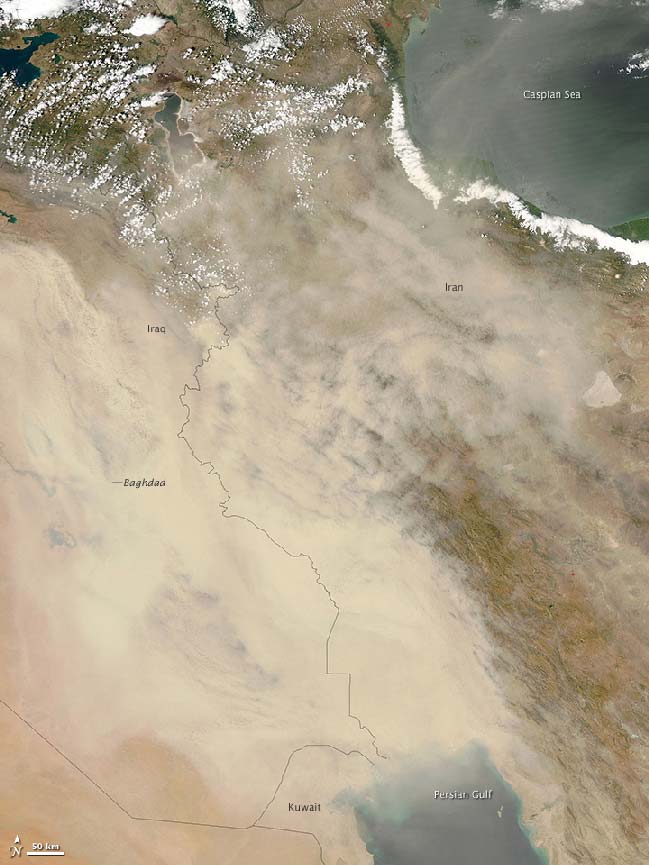Huge Iraq Dust Storm Seen From Space

A giant dust storm that has raged through Iraq and other Middle East countries for more than a week has been imaged by satellite.
Many Iraqis considered the storm to be the worst in living memory, according to news reports. Hundreds of people reported to the hospital for respiratory distress, and the blowing dust interfered with travel by air and on land.
The new picture, released today, comes from NASA's Aqua satellite. It shows the region at the height of the storm July 5.
Dust is known to lift off continents and migrate across oceans. Desert-dust storms whip up and disperse an estimated 2.4 billion tons of soil and dried sediment throughout the Earth's atmosphere annually, scientists estimate. Each gram of dust contains up to a billion bacterial cells, too. As one example of the global circulation, dust and bacteria can lift off the Sahara Desert in Africa and end up in Florida.
On the plus side, dust storms are known to bring much-needed iron to ocean plants. On the downside, dust storms may be linked to lethal epidemics.
The warming of Atlantic Ocean waters in recent decades is largely due to declines in airborne dust from African deserts and lower volcanic emissions, a study this year suggested.
In the new satellite view, parts of the Tigris and Euphrates Rivers are visible because, in some places, the dust is only a veil. In other places, however, the dust is a thick blanket, completely blocking the ground from view. Baghdad is hidden.
Get the world’s most fascinating discoveries delivered straight to your inbox.
July and August are the hottest months of the year in Iraq, according to researchers at NASA's Earth Observatory. Temperatures can reach more than 120 degrees Fahrenheit.
From mid-June through September, a northwest wind — the shamal — blows almost constantly. Periodically, the winds intensify to the 15 knots (about 17 mph) generally required to whisk dust off the ground.
A drought has dried out wetlands and other pockets of moisture in the arid country, which increases the number of places where the shamal can pick up dust. The resulting dust storms can last for days.
- 101 Amazing Earth Facts
- Why the 1930s Dust Bowl Was So Bad
- Quiz: Global Weather Extremes



